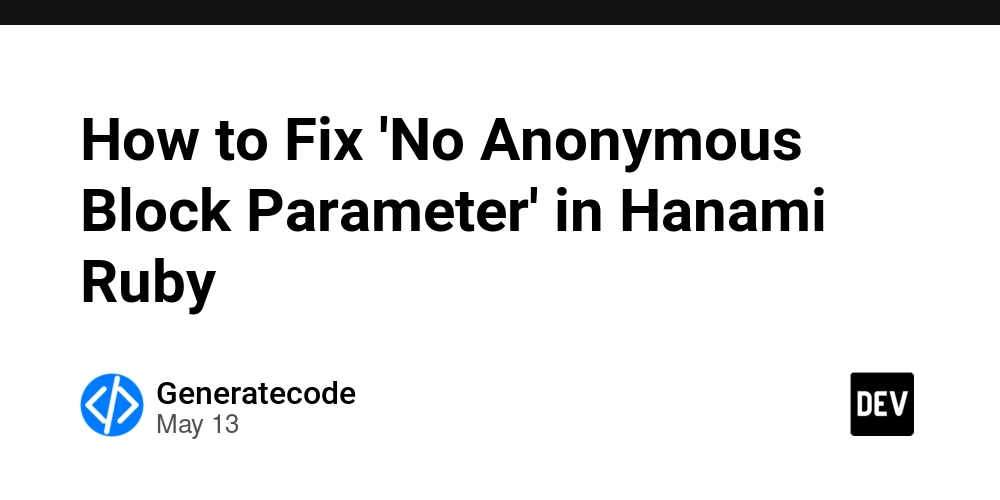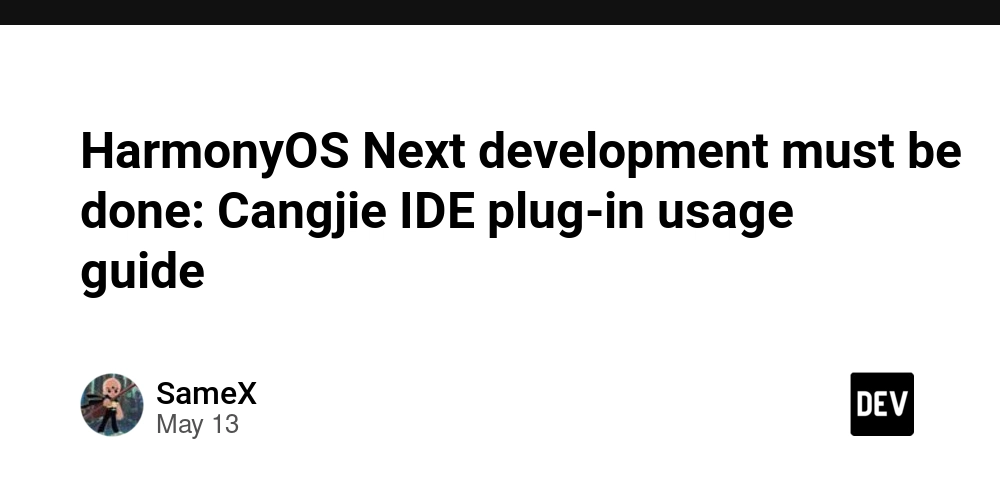How to Fix 'No Anonymous Block Parameter' in Hanami Ruby
When working with the Hanami framework in Ruby, validating parameters is an essential task to ensure the integrity of the data your applications handle. If you've encountered the error 'no anonymous block parameter' while validating your parameters, you're not alone. This common issue arises due to the way blocks are defined and used in Ruby. Understanding the 'No Anonymous Block Parameter' Error In Ruby, when you define a method that takes a block, you generally have to capture that block using a block parameter. The error 'no anonymous block parameter' suggests that the block you're trying to define doesn't have an associated variable to hold the block context. Without this, Ruby cannot process the block correctly, leading to the error. Common Scenario of the Error Let's take a look at the code snippet you provided: params do required(:registration).hash do required(:username).filled(:string) required(:password).filled(:string) required(:password_confirmation).filled(:string) end end In this example, it seems you're trying to validate the parameters for a registration form, which includes fields for a username, password, and password confirmation. However, the params method is likely expecting a block with a parameter that represents the context of the block. Fixing the Error Step 1: Define a Block Parameter To fix this, you need to define the block parameter. Here's how you can adjust your code: params(:registration) do required(:username).filled(:string) required(:password).filled(:string) required(:password_confirmation).filled(:string) end In this corrected version, params(:registration) takes a symbol as an argument (representing the expected parameters) and then the block that follows is executed in the context of that registration parameter. Step 2: Validate Correctly Ensure you're validating nested parameters correctly. It's good practice to validate the nested keys and their expected types. If you want to separate out the required fields into a hash, your approach is quite close. Here’s another version that keeps everything within the hash: params do required(:registration).hash do |r| r.required(:username).filled(:string) r.required(:password).filled(:string) r.required(:password_confirmation).filled(:string) end end In this revision, |r| acts as an anonymous block parameter allowing you to smoothly reference the registration parameters. Additional Tips for Avoiding This Error Check Documentation: Always refer to the official Hanami documentation. It may provide hints or examples of correct usage. Experiment with Methods: If you're unsure about how a method is utilized, try experimenting in the console. This can help clarify how block parameters and methods interact. Code Organization: Proper organization of your validation code can prevent confusion and future errors, especially with nesting. Frequently Asked Questions What does 'no anonymous block parameter' mean? The error indicates that a block definition expects a parameter to refer to the context within the block but none is provided. How do I validate nested parameters in Hanami? Utilize nested hashes and ensure that every nested validation has the correct block parameters defined. Where can I find more information about Hanami validations? The official Hanami documentation provides comprehensive guides on validations and parameter handling. By adjusting your parameter validations and clearly defining your block parameters, you should no longer encounter the 'no anonymous block parameter' error. Following best practices in Ruby and Hanami will help you write cleaner and more maintainable code.

When working with the Hanami framework in Ruby, validating parameters is an essential task to ensure the integrity of the data your applications handle. If you've encountered the error 'no anonymous block parameter' while validating your parameters, you're not alone. This common issue arises due to the way blocks are defined and used in Ruby.
Understanding the 'No Anonymous Block Parameter' Error
In Ruby, when you define a method that takes a block, you generally have to capture that block using a block parameter. The error 'no anonymous block parameter' suggests that the block you're trying to define doesn't have an associated variable to hold the block context. Without this, Ruby cannot process the block correctly, leading to the error.
Common Scenario of the Error
Let's take a look at the code snippet you provided:
params do
required(:registration).hash do
required(:username).filled(:string)
required(:password).filled(:string)
required(:password_confirmation).filled(:string)
end
end
In this example, it seems you're trying to validate the parameters for a registration form, which includes fields for a username, password, and password confirmation. However, the params method is likely expecting a block with a parameter that represents the context of the block.
Fixing the Error
Step 1: Define a Block Parameter
To fix this, you need to define the block parameter. Here's how you can adjust your code:
params(:registration) do
required(:username).filled(:string)
required(:password).filled(:string)
required(:password_confirmation).filled(:string)
end
In this corrected version, params(:registration) takes a symbol as an argument (representing the expected parameters) and then the block that follows is executed in the context of that registration parameter.
Step 2: Validate Correctly
Ensure you're validating nested parameters correctly. It's good practice to validate the nested keys and their expected types. If you want to separate out the required fields into a hash, your approach is quite close. Here’s another version that keeps everything within the hash:
params do
required(:registration).hash do |r|
r.required(:username).filled(:string)
r.required(:password).filled(:string)
r.required(:password_confirmation).filled(:string)
end
end
In this revision, |r| acts as an anonymous block parameter allowing you to smoothly reference the registration parameters.
Additional Tips for Avoiding This Error
- Check Documentation: Always refer to the official Hanami documentation. It may provide hints or examples of correct usage.
- Experiment with Methods: If you're unsure about how a method is utilized, try experimenting in the console. This can help clarify how block parameters and methods interact.
- Code Organization: Proper organization of your validation code can prevent confusion and future errors, especially with nesting.
Frequently Asked Questions
What does 'no anonymous block parameter' mean?
The error indicates that a block definition expects a parameter to refer to the context within the block but none is provided.
How do I validate nested parameters in Hanami?
Utilize nested hashes and ensure that every nested validation has the correct block parameters defined.
Where can I find more information about Hanami validations?
The official Hanami documentation provides comprehensive guides on validations and parameter handling.
By adjusting your parameter validations and clearly defining your block parameters, you should no longer encounter the 'no anonymous block parameter' error. Following best practices in Ruby and Hanami will help you write cleaner and more maintainable code.














































































































































































![[The AI Show Episode 156]: AI Answers - Data Privacy, AI Roadmaps, Regulated Industries, Selling AI to the C-Suite & Change Management](https://www.marketingaiinstitute.com/hubfs/ep%20156%20cover.png)
![[The AI Show Episode 155]: The New Jobs AI Will Create, Amazon CEO: AI Will Cut Jobs, Your Brain on ChatGPT, Possible OpenAI-Microsoft Breakup & Veo 3 IP Issues](https://www.marketingaiinstitute.com/hubfs/ep%20155%20cover.png)












































































































































































































































.jpg?width=1920&height=1920&fit=bounds&quality=70&format=jpg&auto=webp#)

























_Michael_Burrell_Alamy.jpg?width=1280&auto=webp&quality=80&disable=upscale#)

























































































































































































